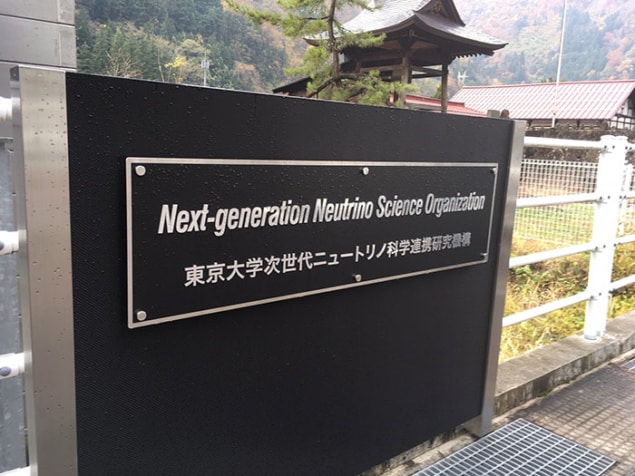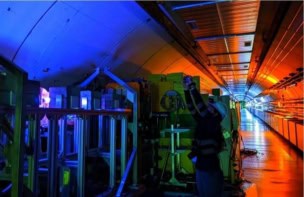
The University of Tokyo has created the Next-generation Neutrino Science Organization (NNSO) to promote the construction of a new neutrino facility in Japan called Hyper-Kamiokande (Hyper-K). The occasion was marked on Wednesday by a gathering of around 100 people at the Kamioka Observatory, which is already home to Hyper-K’s predecessor – Super-Kamiokande. The 2015 Nobel-prize-winning neutrino physicist Takaaki Kajita, who was also at the event, has been appointed director of NNSO.
The $800m Hyper-K neutrino experiment would, if built, involve a 260,000 tonne tank of pure water some 74 m in diameter and 60 m tall. Located 650 m underground in Kamioka, it aims to detect the Cherenkov radiation produced by the collision of neutrinos with water molecules using 40,000 photomultiplier tubes that each have a diameter of 50 cm. The project is being led by the Institute for Cosmic Ray Research (ICRR) together with the Kavli Institute for the Physics and Mathematics of the Universe (IPMU) and the University of Tokyo’s School of Science.
Fundamental question
The main aim of Hyper-K is to detect charge–parity symmetry violation (CP violation) in neutrinos, which could explain why there is more matter than antimatter in the universe. Indeed, the 10-fold increase in detector volume over Super-Kamiokande will allow physicists to get much better statistics, with the aim of getting a 5σ “gold standard” measurement by 2030. “This is about answering the fundamental question of why we exist,” says neutrino physicist Masahiro Kuze from the Tokyo Institute of Technology. Yet CP violation is not the only goal, it will also aim to determine the “mass hierarchy” of the three types of neutrinos – electron, muon and tao.
Physicists in Japan hope that Hyper-K will be approved later this year by the country’s Ministry of Education, Culture, Science and Technology (MEXT). Indeed, the project is already part of MEXT’s roadmap of future facilities, in which it was selected earlier this year together with six other planned facilities. If given the go-ahead, construction could begin next year and be completed by 2026. Japanese physicists are looking for foreign investment in the project. It is expected that the Japanese photonics firm Hamamatsu will build at least half of the 40,000 photomultiplier tubes, with the rest made by other countries.
America first?
Hyper-K is not the only next-generation neutrino experiment aiming to detect CP violation. The Deep Underground Neutrino Experiment in the US, which began construction in July, will aim to do so via four 10,000 tonne tanks of liquid argon. While the US project is further along in terms of construction, the technology is much less established than that at Hyper-K, so physicists in Japan are confident – if the project is approved soon – that they can measure it first.
“I firmly believe that the Hyper-K experiment will be one of the most important experiments in the foreseeable future to study the universe,” says Hitoshi Murayama, director of the IPMU. “I am very excited, let’s make Hyper-K happen.”



